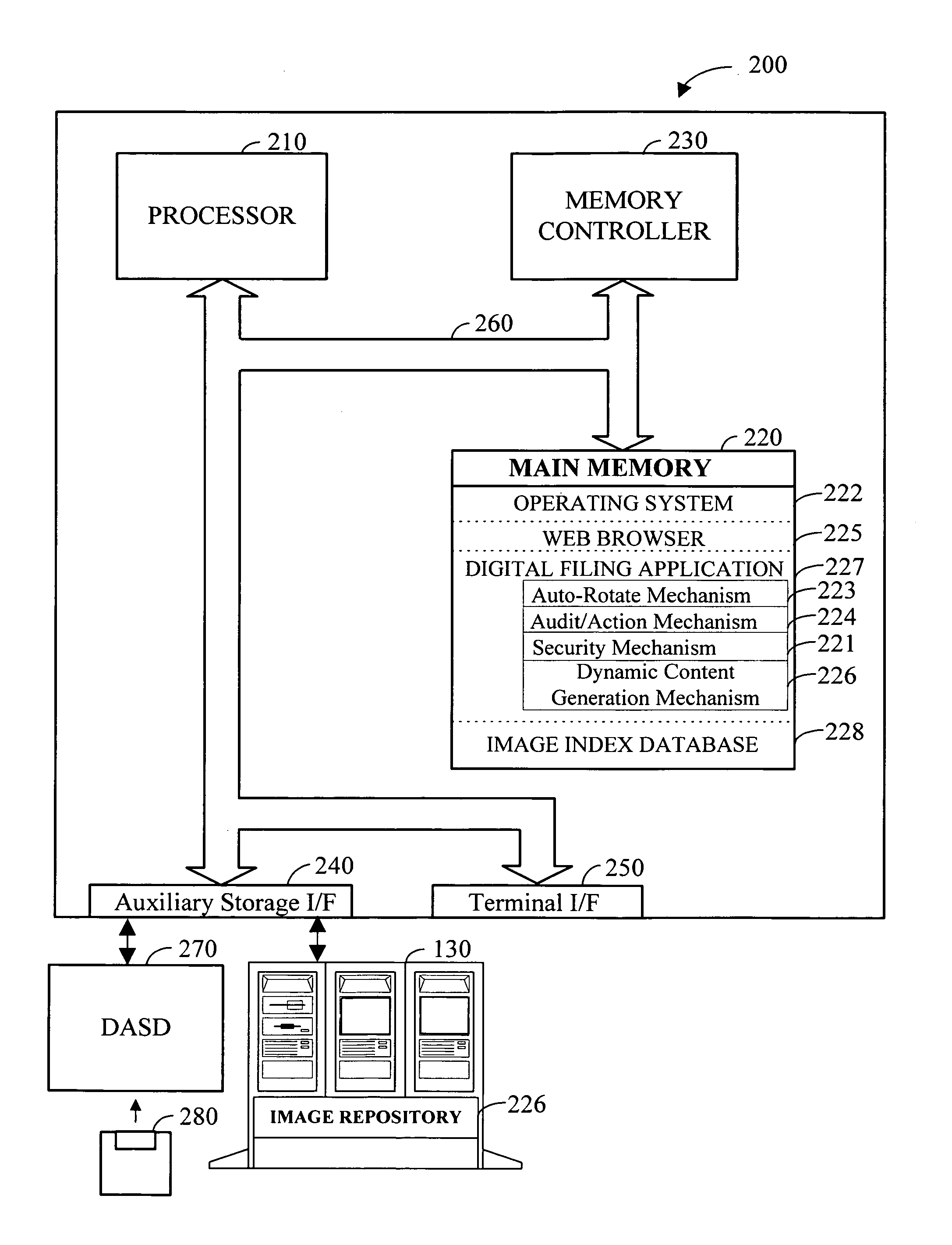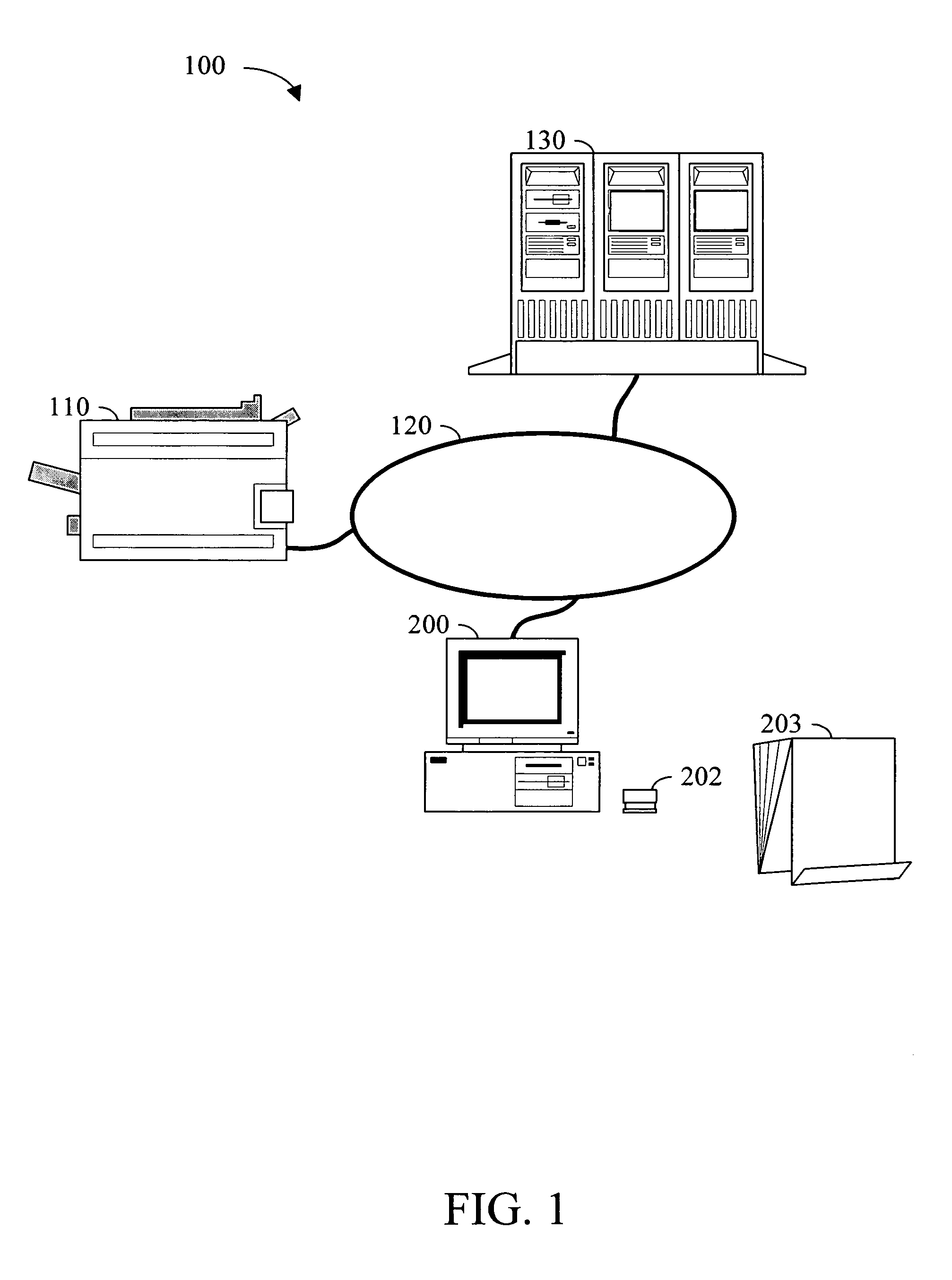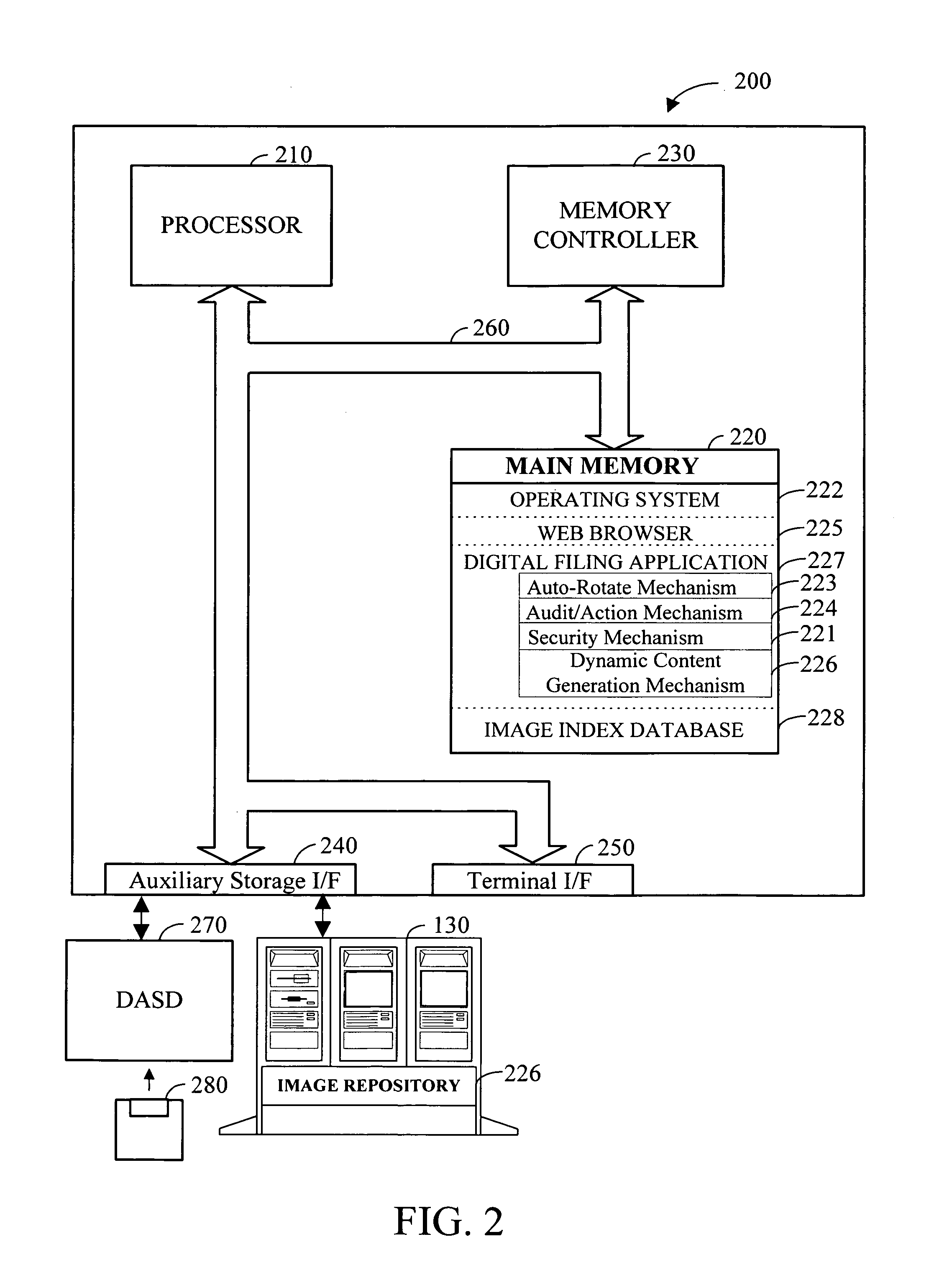Apparatus and method for dynamically creating fax cover sheets containing dynamic and static content zones
a dynamic content and fax cover technology, applied in the field of document management, can solve the problems of business and organization choking productivity, less than 25% of the information used in the world today is available in a computer-accessible format, and the process labor cost is high, and achieves the effect of easy and effective indexing, imaging, and storag
- Summary
- Abstract
- Description
- Claims
- Application Information
AI Technical Summary
Benefits of technology
Problems solved by technology
Method used
Image
Examples
Embodiment Construction
[0055]The present invention provides a simple and efficient way to store and retrieve documents in a digital filing system. By using the preferred embodiments of the present invention, a comprehensive system of storing, managing, and retrieving digital images of paper-based documents can be realized.
DETAILED DESCRIPTION
[0056]The digital filing system and methods of the present invention provide a complete solution for indexing documents, imaging / scanning documents, storing documents, and retrieving documents. By implementing the present invention, a user can quickly and easily manage paper-based documents in any business environment. The digital filing process involves receiving a paper-based document, indexing the document at the user's workstation, affixing a globally unique document identifier to the document, imaging / scanning the document, extracting the globally unique document identifier from the label, and electronically storing the document using the document identifier cont...
PUM
 Login to View More
Login to View More Abstract
Description
Claims
Application Information
 Login to View More
Login to View More - R&D
- Intellectual Property
- Life Sciences
- Materials
- Tech Scout
- Unparalleled Data Quality
- Higher Quality Content
- 60% Fewer Hallucinations
Browse by: Latest US Patents, China's latest patents, Technical Efficacy Thesaurus, Application Domain, Technology Topic, Popular Technical Reports.
© 2025 PatSnap. All rights reserved.Legal|Privacy policy|Modern Slavery Act Transparency Statement|Sitemap|About US| Contact US: help@patsnap.com



